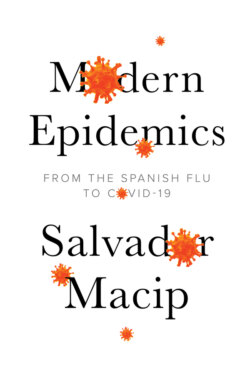Читать книгу Modern Epidemics - Salvador Macip - Страница 21
Typhoid Mary
ОглавлениеMary Mallon (1869–1938) has gone down in history as ‘Typhoid Mary’, the first person to be identified in the United States as a carrier of typhoid fever (a disease caused by the bacteria Salmonella, which is transmitted through contaminated food or drink) without ever being ill herself. Mary was a kind of epidemic on two legs. She infected fifty-three people in her lifetime but always denied that she was to blame. Moreover, she never wanted to leave her job as a cook, despite the very high chances that she would infect people through the food she prepared. When she was banned from cooking, she even changed her name so she could keep doing her job and thus continue to infect and kill her clients.
Mary, who worked in New York, was finally forced to go into quarantine. When she died (of pneumonia) she was still in isolation. It’s believed that she could have been born with the infection, as her mother had the disease when she was pregnant.
The other important factor when defining the aggressiveness of an outbreak is the severity of the symptoms it causes. These can range from a slight fever and feeling out of sorts (as with the common cold) to death. It’s said that the virulence of the infection is determined by the intensity of the effects it has in people. An infection that spreads quickly (one with a high R0) usually has low virulence, but, even so, it can still constitute a major health problem, as we’ve seen with COVID-19. Then again, if a disease kills a high percentage of infected people, the ease of contagion tends to be much lower, so it’s unlikely to cause a pandemic (as it will remain localized). A typical example of this would be Ebola, which has very high lethality, but it rarely goes beyond an outbreak or, at most, an epidemic. A combination of easy transmission and high virulence is what is most dangerous. Fortunately, this combination is highly improbable.
Animals are sometimes part of infectious cycles in which they become reservoirs – that is to say, a place where microbes can accumulate and from which they can infect humans in future. Very often, the animals that act as reservoirs aren’t affected by the presence of the microbes and show no symptoms of disease either. The existence of reservoirs makes it very difficult to eliminate microbes completely. Examples include pigs and birds (common reservoirs of influenza viruses), and mosquitoes (reservoirs of malaria). Many of the major recent pandemics come from viruses that have jumped to humans from their reservoir animals, for example monkeys in the case of AIDS and, probably, bats in that of COVID-19.
